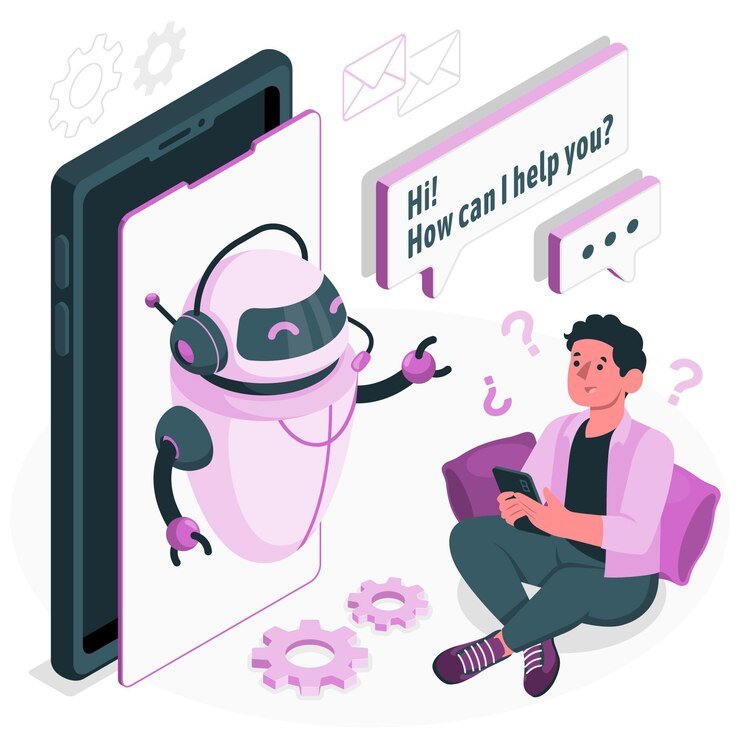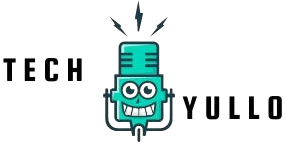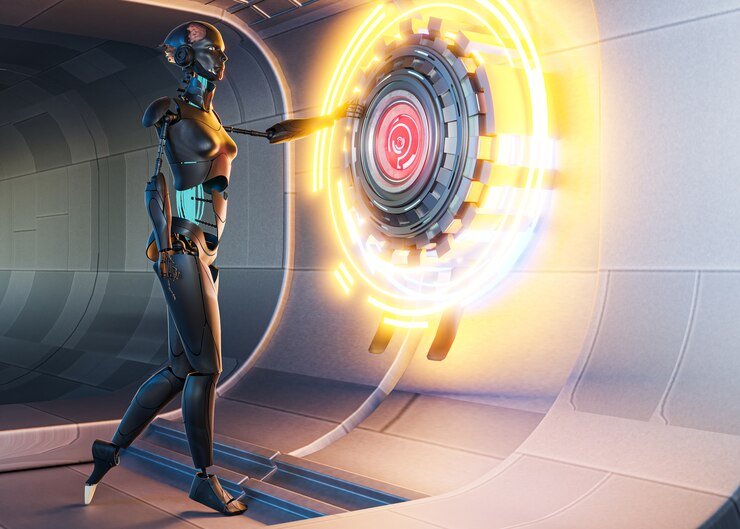Introduction of AI Chat
Artificial Intelligence (AI) chat technology has dramatically transformed how we interact and communicate. Once the stuff of science fiction, AI-driven conversational agents are now ubiquitous, seamlessly integrating into our daily lives. From customer service chatbots to virtual assistants like Siri and Alexa, AI chat systems have revolutionized communication, making it more efficient, personalized, and accessible. This article explores the evolution, applications, benefits, and future of AI chat technology.
The Evolution of AI Chat Technology
The journey of AI chat technology began in the mid-20th century with the development of the first rudimentary chatbots. One of the earliest examples was ELIZA, created by Joseph Weizenbaum in the 1960s. ELIZA used pattern matching and substitution methodologies to simulate conversation, primarily mimicking a Rogerian psychotherapist. Despite its limitations, ELIZA demonstrated the potential of computer programs to engage in human-like dialogue.
The 1990s and early 2000s saw significant advancements with the introduction of more sophisticated natural language processing (NLP) techniques. Chatbots like A.L.I.C.E. (Artificial Linguistic Internet Computer Entity) utilized AIML (Artificial Intelligence Markup Language) to improve conversational capabilities. However, these early systems were still heavily reliant on pre-programmed responses and lacked true understanding.
The advent of machine learning and deep learning in the 2010s marked a turning point for AI chat technology. With the development of neural networks and large-scale datasets, chatbots became capable of understanding and generating more natural and contextually relevant responses. OpenAI’s GPT-3, launched in 2020, is a prime example of this leap forward. Leveraging 175 billion parameters, GPT-3 can engage in remarkably coherent and context-aware conversations, blurring the line between human and machine communication.

AI Chat: Revolutionizing Communication in the Digital Age
Applications of AI Chat Technology
AI chat technology has found applications across various sectors, enhancing both personal and professional communication.
- Customer Service: AI chatbots are now a staple in customer service, providing instant responses to queries, resolving issues, and guiding users through processes. This not only improves customer satisfaction but also reduces the workload on human agents, allowing them to focus on more complex tasks.
- Healthcare: Virtual health assistants powered by AI chat technology are revolutionizing healthcare. These systems can provide patients with medical information, schedule appointments, and offer mental health support. For example, Woebot uses AI to deliver cognitive-behavioral therapy through chat, making mental health support more accessible.
- Education: AI chatbots in education serve as virtual tutors, answering students’ questions, providing explanations, and even grading assignments. This personalized assistance helps students learn at their own pace and provides educators with valuable insights into their progress.
- E-commerce: In the realm of online shopping, AI chatbots assist customers in finding products, answering questions about features and availability, and facilitating purchases. This enhances the shopping experience by providing immediate assistance and personalized recommendations.
- Workplace Collaboration: AI chatbots integrated into workplace communication platforms like Slack and Microsoft Teams streamline workflows by managing schedules, setting reminders, and answering employee queries. This boosts productivity and allows teams to collaborate more effectively.
Benefits of AI Chat Technology
The widespread adoption of AI chat technology is driven by several key benefits:
- 24/7 Availability: Unlike human agents, AI chatbots can operate around the clock, providing assistance and support whenever needed. This is particularly valuable for global businesses with customers in different time zones.
- Scalability: AI chat systems can handle multiple conversations simultaneously, making them highly scalable. This ensures that even during peak times, users receive timely responses without long wait times.
- Cost Efficiency: Implementing AI chatbots can significantly reduce operational costs. By automating routine tasks and handling high volumes of inquiries, businesses can allocate resources more efficiently and reduce the need for large customer service teams.
- Personalization: Advanced AI chatbots can analyze user data to provide personalized recommendations and responses. This enhances the user experience by tailoring interactions to individual preferences and needs.
- Improved Accuracy: With continuous learning and updates, AI chatbots improve their accuracy over time. They can understand context, recognize intent, and provide more relevant and accurate responses, minimizing the risk of misunderstandings.
Challenges and Future of AI Chat Technology
Despite its many advantages, AI chat technology faces several challenges that need to be addressed to fully realize its potential.
- Language and Cultural Nuances: AI chatbots often struggle with understanding and responding to language nuances, slang, and cultural references. Enhancing their ability to comprehend diverse linguistic and cultural contexts is crucial for improving their effectiveness globally.
- Emotional Intelligence: While AI chatbots can mimic human conversation, they often lack genuine emotional intelligence. Developing systems that can understand and respond to human emotions empathetically is an ongoing challenge.
- Privacy and Security: The use of AI chat technology involves handling sensitive user data. Ensuring robust privacy and security measures is essential to protect user information and maintain trust.
- Dependence on Data: AI chatbots rely heavily on large datasets for training. Ensuring the quality and diversity of these datasets is crucial for developing unbiased and accurate systems.
Looking ahead, the future of AI chat technology holds exciting possibilities. Advances in natural language processing, machine learning, and cognitive computing will further enhance the capabilities of AI chatbots. The integration of voice recognition and speech synthesis will enable more natural and seamless interactions. Additionally, the development of hybrid systems that combine human and AI capabilities will offer the best of both worlds, providing efficient and empathetic communication.

AI Chat: Revolutionizing Communication in the Digital Age
Conclusion
AI chat technology has undeniably transformed the landscape of communication. From improving customer service to enhancing healthcare, education, and e-commerce, its applications are vast and varied. The benefits of AI chatbots, including 24/7 availability, scalability, cost efficiency, personalization, and improved accuracy, make them indispensable tools in the digital age. While challenges remain, ongoing advancements promise to unlock even greater potential, making AI chat technology an integral part of our future communication ecosystem. As we continue to innovate and refine these systems, the line between human and machine interaction will blur further, ushering in a new era of seamless and intelligent communication.
Read More:>
http://AI Checker Free: Your Guide to Plagiarism-Free Content

